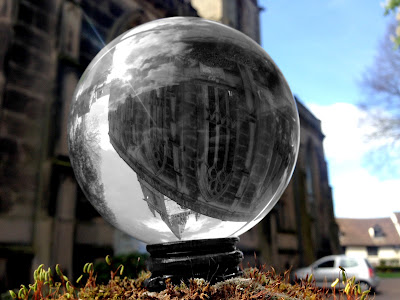After using and creating my digital pinhole to create the same effect as a film camera I decided to compare the difference in quality of images with the digital pinhole and my Praktica film camera. The image below was a image that was captured with my film camera and a problem occurred here that is very common with film cameras and it's that the image is underexposed and to make sure no images are underexposed or over exposed takes time and practise to understand the light balance and which shutter speed to use. Another problem I found with this image and actually with all of my images is that there is green streaks through the images and this annoyed me cause majority of my images on the negatives would have looked fine and usable without the green streak.
Here are a few images that didn't work and still have a surreal look to them as there a bit's missing or not fully developed.
Contact Sheet














